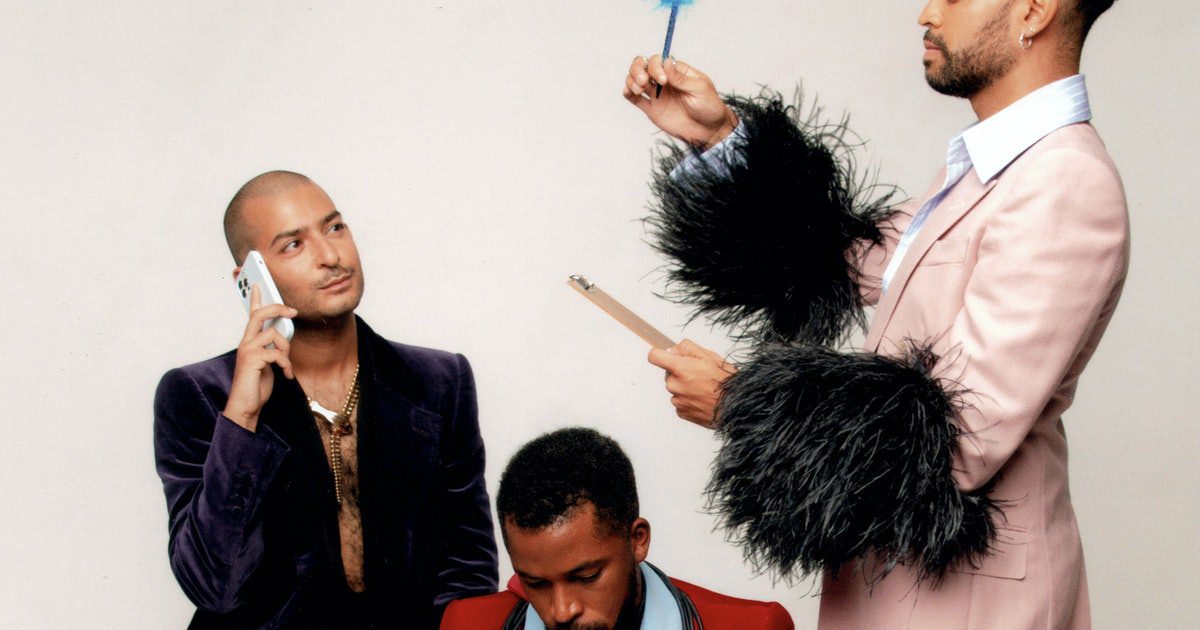For our annual “The Originals” issue, we asked creatives—pioneers in the fields of art, design, fashion, comedy, activism, and more—to share their insights on staying true to themselves. Read all of this year’s interviews here.
For eight years, the three of you have made spaces for queer people of color to get together. How would you compare your vision for Papi Juice when you first started curating events and putting together parties, back in 2013, to what you hope the collective can become now?
Oscar: There is no existing blueprint for the way that our art collective functions or how our work exists and manifests itself in this world.
Mo: In 2013, it felt so exciting to get these people together. And now, in 2021, as we are reopening, it feels exciting for different reasons. As a generation that found so much of ourselves on the Internet, at the end of the day, we still crave each other in person, in the flesh, on a dance floor.
Adam: I’m really interested in this legacy of space as sculpture. I think DJing can be construed as a form of sculpture—the way that music changes space. Creating places for people to enjoy that are super intentional in terms of their visuals, as well as their cultural impact, is something that we have been very interested in. Assembly and community are key parts of queer history in so many ways—not only hanging out or going to parties, but also demonstrating together and advocating for one another.
Papi Juice member Oscar Nñ.
With Papi Juice, you’ve combined getting together for both fun and queer visibility. How did this idea of assembly influence you growing up?
Mo: My mom is the youngest of 13, and my dad is the youngest of eight. I have so many cousins. I grew up around a lot of people. My mom was always queen bee of the local mosque, always on the landline, always yelling at us to get off the Internet because she was making a phone call, always hosting parties. My two siblings and I would always be her little helper bees, setting the table, picking up plates, bringing out the chai. We were socialized to help keep the party going in a really wholesome way, with food and a dessert. That informs the way I navigate these spaces now, just making sure everyone’s having a good time.
Papi Juice member Adam R.
Who was the first person who made you realize you could break the rules?
Mo: My friend Johnny. He went to the same high school as me but is a year older, and I didn’t really meet him until after graduation. He was the first gay person I’d ever met in real life. This was before “queer” was really in my terminology or identity, and this person looked nothing like the gay people I’d see on TV or in movies. I had this very religious, community-centered upbringing, and my idea of gay culture was promiscuous, rooted in the clubs, and that’s it. It’s so crazy to think that the first person who told me to break the rules was just a very normal person.
Oscar: My sister. She was a kid from the ’90s, listening to Nirvana and Alanis Morissette, and she was kind of grunge. To me, it was just like, Damn, she’s definitely breaking the rules, but is also an excellent student, a really good daughter, an excellent friend, super loving with my mom to this day. I wasn’t allowed to play with her Barbies, but she would let me behind my parents’ back. That meant so much to me.
Papi Juice member Mohammed Fayaz.
Hair by Matt Benns using Bumble and bumble; makeup by William Scott for the Wall Group using Shiseido; photo assistant: Megan Collante; stylist assistant: Maura Kemp.
Adam: I’ll say my mom. She is one of five sisters; she’s the most liberal out of all of them, and probably the black sheep—loves a social hang, loves gathering people, is professional, but also is just out here going to parties. She cares about looking fabulous all the time and influences me to do the same. She taught me so much about social graces and how to have a good time, how to make a space to give to people.

